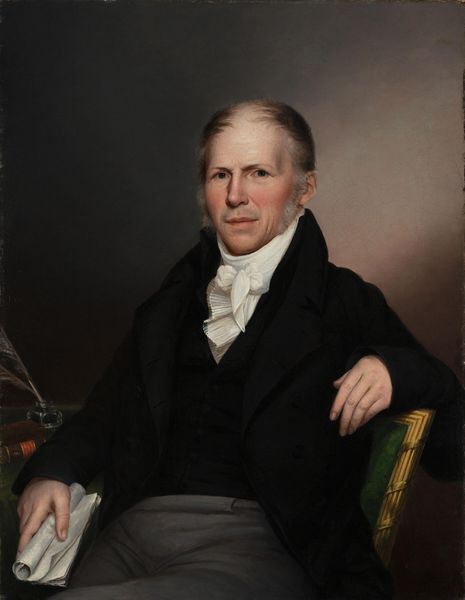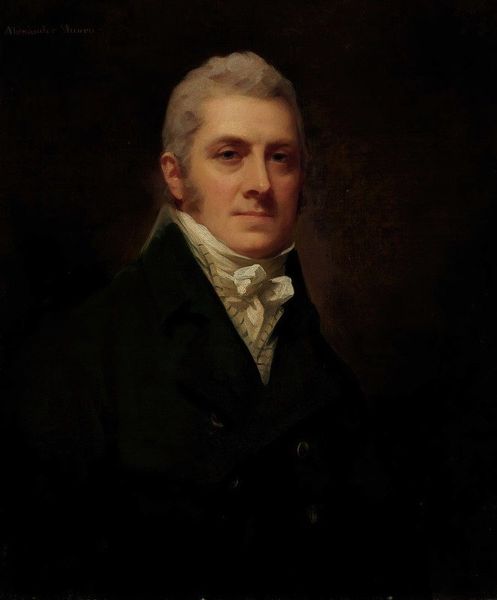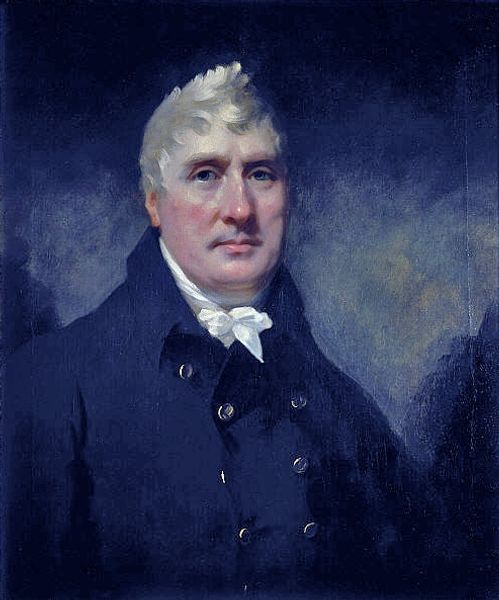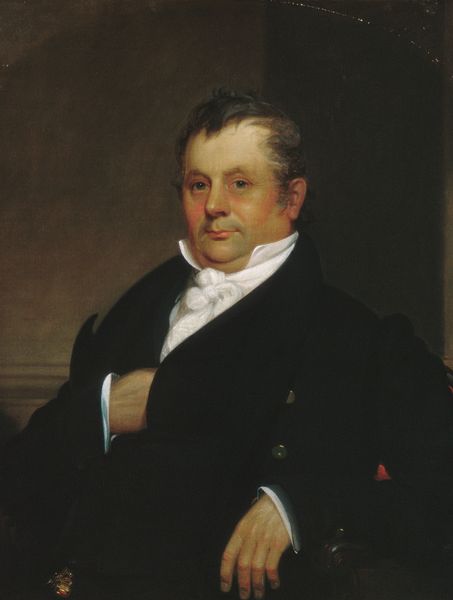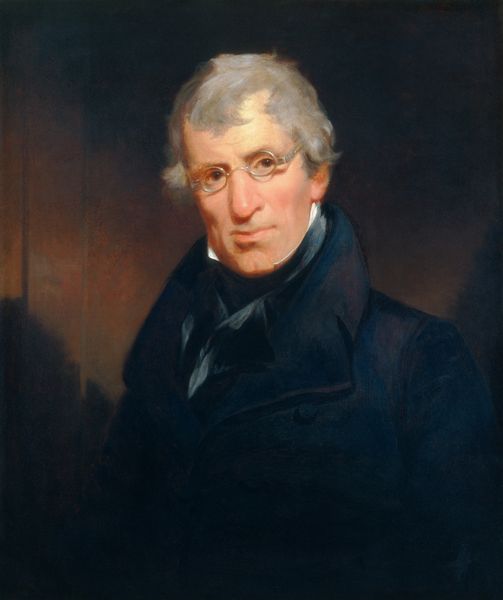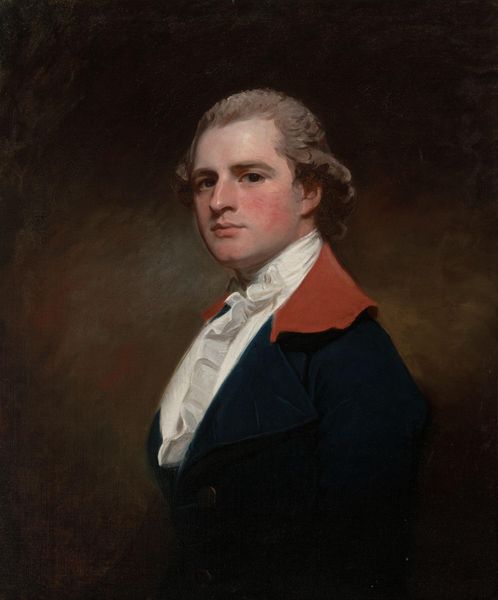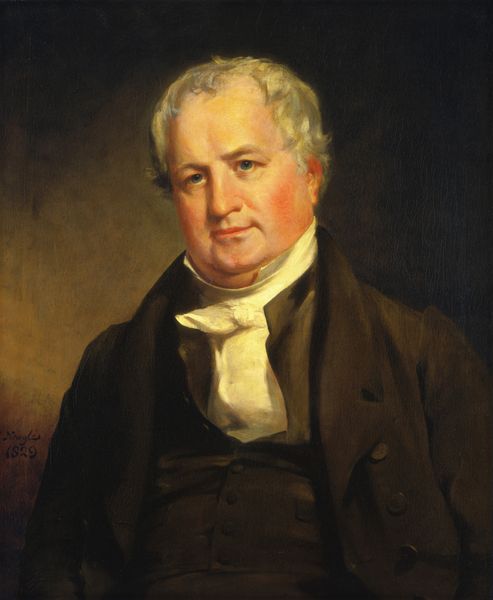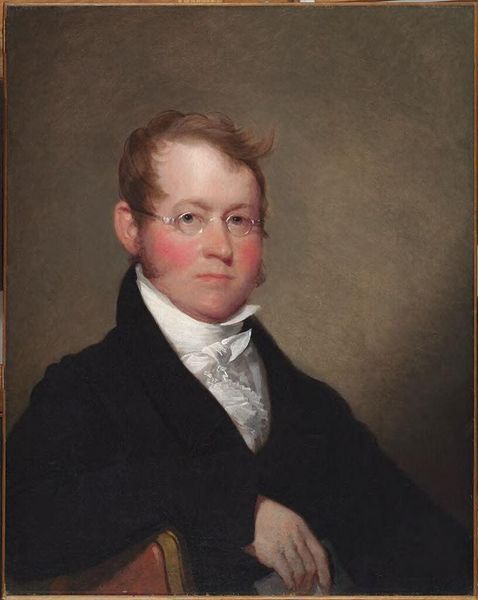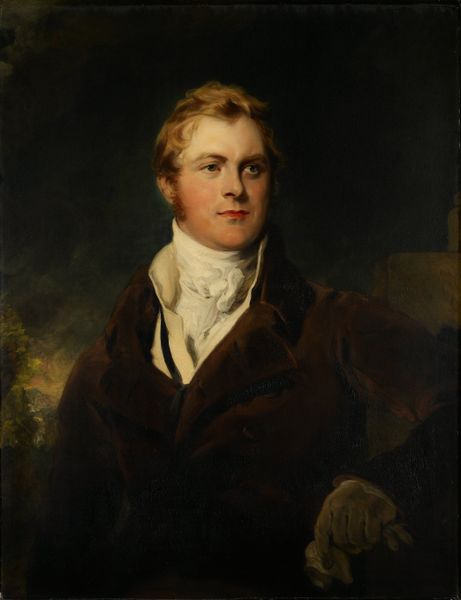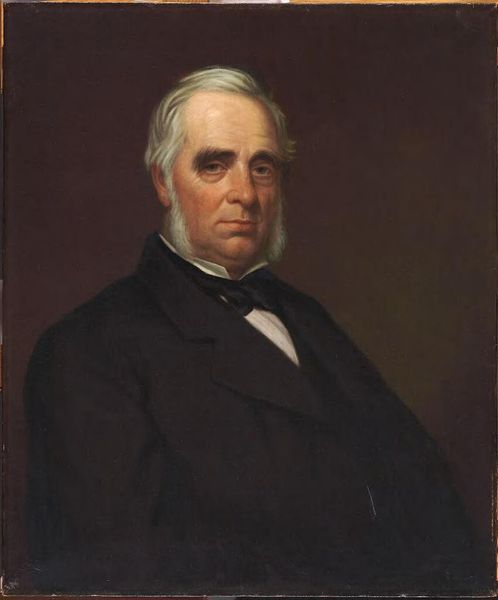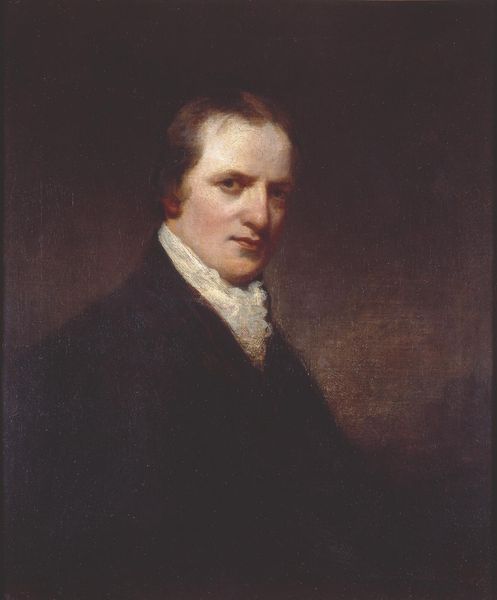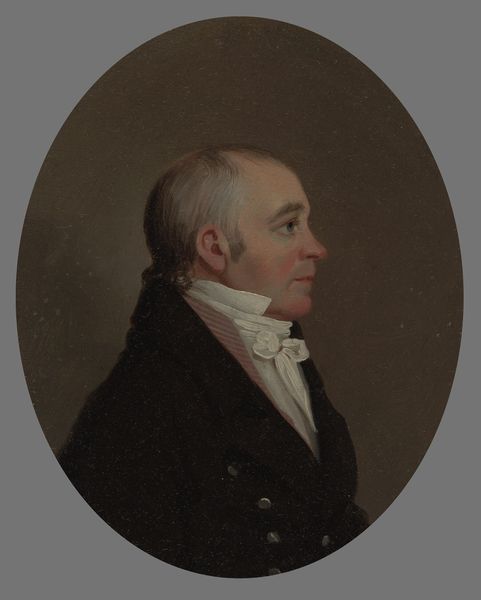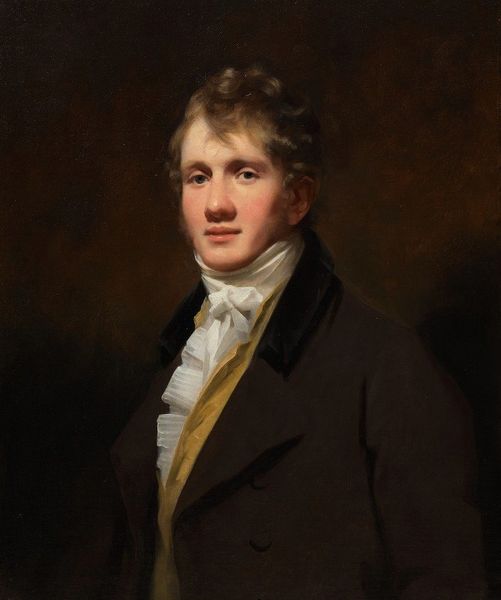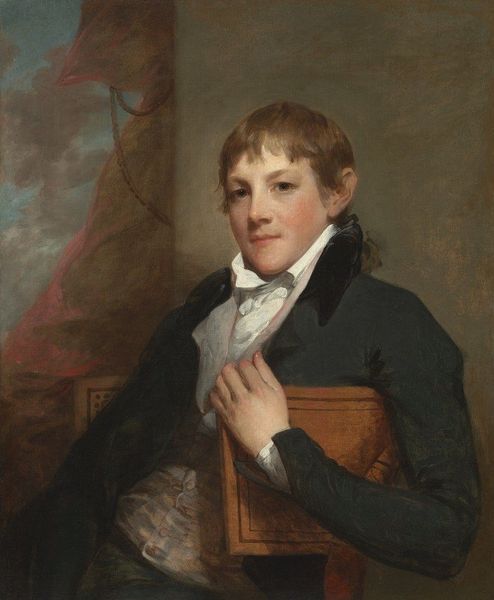
painting, oil-paint
#
portrait
#
self-portrait
#
portrait image
#
portrait
#
painting
#
oil-paint
#
figuration
#
portrait reference
#
famous-people
#
male-portraits
#
portrait head and shoulder
#
romanticism
#
facial portrait
#
portrait art
#
fine art portrait
#
celebrity portrait
Dimensions: 76.2 x 63.5 cm
Copyright: Public domain
Art Historian: Here we see Sir Henry Raeburn's "Portrait of Sir Walter Scott," dating back to 1822. It is an oil-paint and resides here at the Scottish National Gallery. Curator: The first thing that strikes me is how the light catches the yellow of his waistcoat, contrasting with the heavy shadows surrounding him. There's a palpable tension between formality and a kind of reserved melancholy. Art Historian: Absolutely. Raeburn was the leading portrait painter in Scotland during this period, and his depiction of Scott reflects the sitter’s immense literary and cultural influence. Curator: And it's interesting to consider what "influence" really meant. Scott was instrumental in shaping Scottish national identity, popularizing romanticized views of Highland culture that, let's be honest, often glossed over some of the harsher realities of its history. The highland clearances, for instance. Art Historian: That's a valid point. This portrait helped to solidify Scott's image as a national icon. Consider the pose: dignified, almost statesmanlike. The subtle details of his clothing communicate status and success. Curator: Right, we're seeing the carefully constructed image of a celebrated author and public figure. But I wonder, what anxieties or ambivalences might be lurking beneath that surface? Art Historian: That's what makes portraiture so fascinating—it is as much a creation of its time, and its reception, as a reflection of any supposed 'truth'. Raeburn expertly captures Scott at the height of his fame. Curator: For me, looking at it now, I am aware that our perceptions are mediated. What did 'Scottishness' mean in 1822, and whose voices were excluded from that definition? I am compelled to consider those gaps, too. Art Historian: Indeed, artworks function as important reflections of complex sociopolitical dynamics and become important resources for how historical narratives have evolved. Thank you for enriching the frame around it. Curator: Thanks for giving me space. Now, next time I'm buying shortbread, I'll consider those same power dynamics, too.
Comments
No comments
Be the first to comment and join the conversation on the ultimate creative platform.
